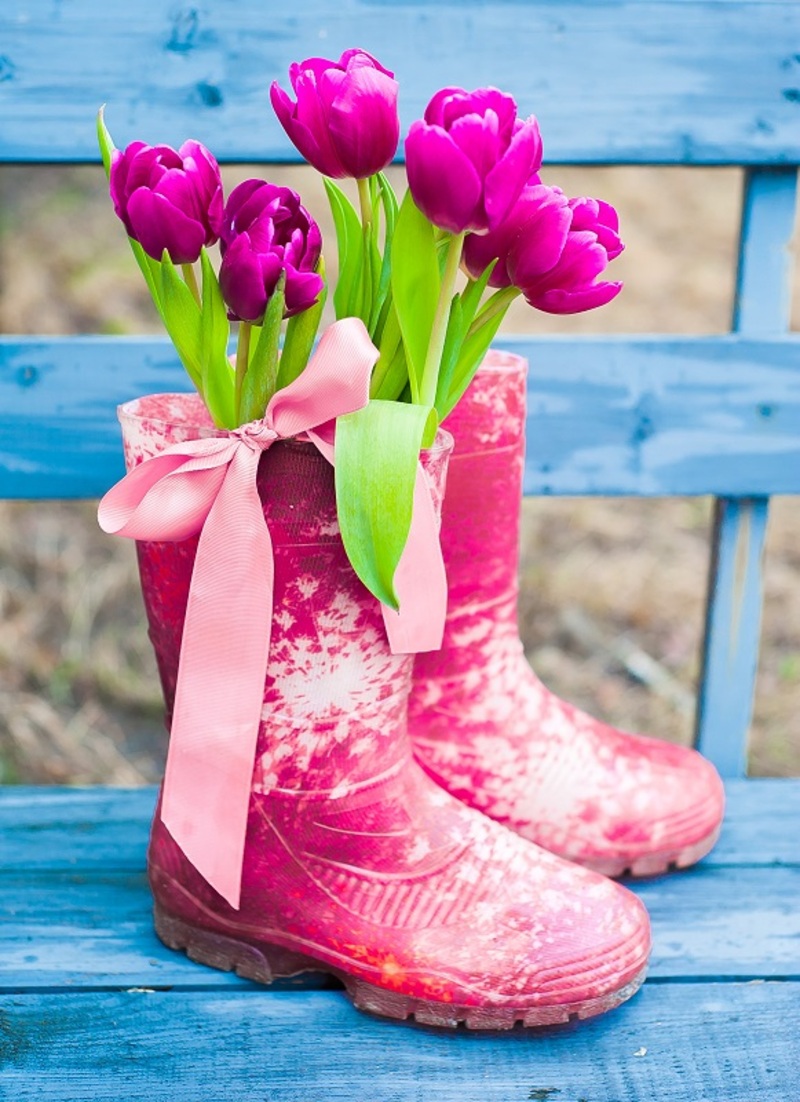Hydrangea Care Guide for Lush Blooms
Posted on 02/07/2025
Hydrangea Care Guide for Lush Blooms
Hydrangeas are loved for their stunning, lush blooms and spectacular display in gardens, borders, and containers. Whether you're an experienced gardener or just starting out, this comprehensive hydrangea care guide will provide you with everything you need to know about nurturing healthy plants and achieving abundant blooms season after season.
Understanding Hydrangeas: Types and Their Characteristics
Before delving into hydrangea care tips, it's essential to understand the different types. Hydrangeas are not a one-size-fits-all flower. Each variety has unique requirements that influence how you care for them and ensure vibrant hydrangea blossoms.
Major Hydrangea Varieties
- Hydrangea macrophylla (Bigleaf Hydrangea): Known for their large mophead or lacecap flowers and the ability to alter bloom color with soil pH.
- Hydrangea paniculata (Panicle Hydrangea): Features cone-shaped flower clusters and is notably hardy and sun-tolerant.
- Hydrangea quercifolia (Oakleaf Hydrangea): Renowned for its remarkable oak-shaped foliage and elongated blooms.
- Hydrangea arborescens (Smooth Hydrangea): Includes the popular 'Annabelle' and produces round, white flower heads.
- Hydrangea serrata (Mountain Hydrangea): Similar to Bigleaf, yet smaller and more cold-resistant.

Perfect Planting for Hydrangea Success
The foundation of healthy hydrangeas and spectacular blooms starts with proper planting. Pay close attention to each detail for a garden full of thriving hydrangea flowers.
When and Where to Plant
- Timing: Plant hydrangeas in early spring or fall, when temperatures are mild and rainfall is abundant.
- Location: Choose a location with morning sun and afternoon shade. Too much direct sunlight can wilt the flowers, while too little sun hinders blooming.
- Spacing: Give each plant ample room to grow, generally 3-10 feet apart depending on the cultivar. This allows adequate airflow and sunlight penetration.
Soil Preparation Matters
- Drainage: Hydrangeas prefer well-draining soil. Amend clay-heavy areas with compost and organic matter to prevent root rot.
- pH Influences Color: For Bigleaf hydrangeas, soil pH affects bloom color:
- Acidic soils (pH below 6): Yields blue flowers
- Alkaline soils (pH above 7): Produces pink blooms
- Nutrient Content: Incorporate slow-release, balanced fertilizers during planting to encourage robust root development and more hydrangea blooms.
Watering Hydrangeas Properly
Hydration is key to gorgeous hydrangea blooms. Both overwatering and underwatering can affect flower production and foliage health.
Best Watering Practices
- Water deeply, 1-2 times a week; increase frequency in extreme heat or drought.
- Always water at the base of the plant to avoid soaked leaves, which can lead to fungal diseases.
- Apply a thick layer (2-3 inches) of organic mulch around hydrangeas to retain moisture and regulate soil temperature.
- Morning watering is best--it gives the foliage time to dry and fights mildew and other diseases.
Feeding Your Hydrangeas: Best Fertilizers and Tips
Proper nutrition is vital for vigorous hydrangea care and maximized blooming. However, incorrect fertilization can result in poor flowering and excessive leaf growth.
Choosing the Right Fertilizer
- Use a balanced, slow-release fertilizer (10-10-10 or 14-14-14) in spring as new growth emerges.
- Avoid high-nitrogen blends, which encourage leaf growth at the expense of hydrangea flowers.
- Consider a bloom-boosting formula with higher phosphorus for mature plants showing slow flowering habits.
How and When to Apply
- Spring: Apply the first dose as soon as the ground thaws and new shoots appear.
- Mid-Season: Lightly feed again before high summer if plants require extra energy for blooming.
- Water Well: Always water deeply after fertilizing to prevent root burn and to help nutrients reach the root zone.
Pruning Hydrangeas for Maximum Blooms
Pruning is perhaps the most confusing aspect of hydrangea flower care. The timing and techniques differ based on your hydrangea's variety.
General Pruning Guidelines
- Remove dead, damaged, or crossing branches at any time to maintain plant health.
- Avoid heavy pruning in late summer or fall--this can remove next season's buds and reduce flowering.
- Sanitize your pruning tools before and after use to prevent disease spread.
Pruning by Variety
- Bigleaf & Mountain Hydrangea: Prune after flowering, usually by midsummer; these types bloom on old wood.
- Panicle & Smooth Hydrangea: Prune in late winter or early spring before buds break, as they bloom on new wood.
- Oakleaf Hydrangea: Prune immediately after flowering, but only lightly to shape and remove deadwood.
Managing Pests and Diseases
Proper hydrangea plant care includes spotting and controlling pests and preventing common diseases:
Common Pests
- Aphids: Look for sticky residue and distorted new leaves. Wash with a strong jet of water or use insecticidal soap.
- Spider Mites: Indicated by fine webbing and yellowing leaves; increase humidity around plants and spray with neem oil if needed.
- Slugs and Snails: Especially problematic for younger hydrangeas. Remove by hand or use iron-based slug bait.
Typical Diseases
- Powdery Mildew: Appears as a white, powdery film on the foliage--improve air circulation and avoid overhead watering.
- Leaf Spot: Brown or purple spotting; remove affected leaves and use appropriate fungicides if needed.
- Root Rot: Caused by waterlogged soil. Ensure good drainage, avoid overwatering, and loosen compact soil as necessary.
Encouraging More Blooms: Advanced Hydrangea Tips
To get the most prolific hydrangea blossom performance, follow these advanced care strategies:
- Maintain consistent moisture levels during the budding and blooming periods.
- Deadhead spent flowers to direct energy back to the plant's growth and future blooms.
- Protect your hydrangeas in winter, especially in colder climates--mulch deeply around the base to insulate roots.
- If your hydrangea won't bloom, check for improper pruning, excessive fertilizer, or winter damage.
How to Control Hydrangea Color (for Bigleaf Types)
- For blue blooms: Lower soil pH using soil acidifiers like aluminum sulfate or add organic materials (peat moss, pine needles).
- For pink blooms: Raise pH by adding ground lime to the soil.
- Consistent treatment is essential, as rainfall and natural soil processes can shift pH over the season.
Remember: White hydrangeas cannot change color using these methods.
Growing Hydrangeas in Containers
Don't have space in the garden? Enjoy lush hydrangea flowers on patios and balconies by growing them in pots!
Container Hydrangea Care
- Use large, sturdy containers with excellent drainage holes.
- Fill with high-quality potting mix and a handful of slow-release fertilizer granules.
- Water more frequently than garden plants, as pots dry quickly--check soil moisture daily in warm weather.
- Move pots to a sheltered spot or insulating location in winter to protect roots from freezing temperatures.

Frequently Asked Questions About Hydrangea Care
Why isn't my hydrangea blooming?
- Improper pruning (cutting buds formed on old wood)
- Excessive shade or not enough light
- Over-fertilizing, especially with high-nitrogen products
- Weather damage (late frosts destroying buds)
Can I grow hydrangeas indoors?
While most hydrangeas thrive outdoors, some compact varieties can be grown indoors with ample light and careful humidity management. However, they perform best in gardens or on patios.
How long do hydrangea flowers last?
With proper care, hydrangea flower heads will last several weeks on the plant and can also be dried for long-lasting indoor arrangements.
Conclusion: Your Path to Stunning, Lush Hydrangea Blooms
In summary, achieving lush hydrangea blooms relies on understanding your plant's unique needs: choose the right variety, locate a suitable site, maintain moisture balance, feed correctly, prune wisely, and prevent pest and disease issues. With this ultimate hydrangea care guide, your hydrangeas will reward you with vibrant flowers and healthy growth year after year. Remember, a little care goes a long way--enjoy your spectacular hydrangeas!
For more gardening tips, be sure to explore our other guides and share your hydrangea success stories!
Latest Posts
10 Office Plants That Practically Take Care of Themselves
Hydrangea Care Guide for Lush Blooms
Explore the Five Favorite Flowers to Gift on Valentine's Day





